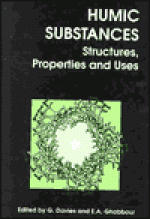Tab Article
This book is unique in highlighting environmental processes from a molecular viewpoint, focusing on the use of chemical and physical methodology to explain this complex subject matter and emphasizing the most up-to-date research. It covers aspects of the biology, chemistry, physics and physiology of humic substance macromolecules, includes the very latest in high level molecular modelling and teaches techniques of particular relevance to agriculture and agronomy. The growing industrial use of humic substances for plant stimulation, alternative energy sources and bioremediation is also featured.
Humic substances may not be beautiful, but they do beautiful things." Furthermore, these richly carbon-endowed polymers are among nature's least understood materials. Twenty papers from the second Humic Substances [HSs] Seminar held March 27, 1998 at Northeastern U., Boston, delve into the multiple roles of HSs as acid-base buffers; binders to metals, molecules, ions, clay, and other polymers; water retainers (in the solid state); and catalysts and regulators in all life forms. Topics include: progress toward characterizing the properties of HSs, humic and fulvic acids in litter decomposition and composting, the implications for biological activity of the generation of free radicals by humic acid, HSs for enhancing turfgrass growth, and the humic acid solution to the greenhouse gas dilemma.


